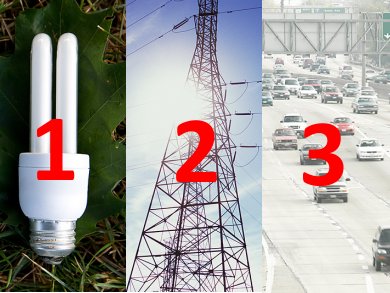James Williams, Monterey Institute of International Studies, California, USA, and co-workers have analyzed the infrastructure and technology changes required for California to meet the target set by the Global Warming Solutions Act of 2006 (Assembly Bill 32). The act mandates an 80 % reduction in greenhouse gas emission from 1990 levels by 2050. This corresponds to a reduction from 427 million metric tons of CO2 to 85 million metric tons.
Williams’ team found that the transformation is technologically feasible but requires technologies that are not yet commercialized along with coordination of investment, technology development, and infrastructure deployment.
They identified three key steps:
- Improved energy efficiency. This can achieve 28 % of the required reduction.
Energy efficiency will have to improve by at least 1.3 % per year over the next 40 years. The largest share of reductions comes from the building sector via improvements in building shell, HVAC (heating, ventilation, and air conditioning) systems, lighting, and appliances. - Decarbonization of energy supply.
Use of renewable energy, nuclear power, and fossil fuel-powered generation coupled with carbon capture and storage technology could reduce emissions a further 27 %. This poses both challenges and opportunities for economic growth and climate policy. - Electrification of transportation and other sectors.
Energy efficiency and decarbonized energy supply alone are not sufficient. The final 16 % required to meet the target can be achieved through the widespread electrification of vehicles, space and water heaters, and industrial processes. Of these, transportation represented the largest potential reduction.
Image: © Wiley-VCH
- The Technology Path to Deep Greenhouse Gas Emissions Cuts by 2050: The Pivotal Role of Electricity
J. H. Williams, A. DeBenedictis, R. Ghanadan, A. Mahone, J. Moore, W. R. Morrow, S. Price, M. S. Torn,
Science 2011.
DOI: 10.1126/science.1208365



